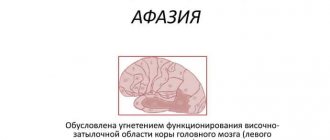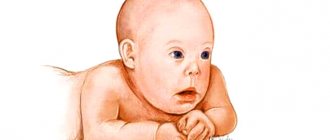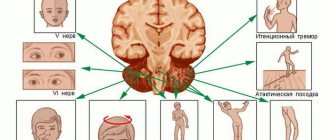What is vasovagal syncope
A short-term loss of consciousness with vasovagal syncope occurs when a person takes an upright position. Such phenomena occur due to stimulation of the vagus nerve, which innervates the chest, neck and intestines.
Like other types of fainting, vasovagal fainting develops against the background of a sharp decrease in blood flow to the brain due to the influence of a number of provoking factors: stress, nervous tension, fear, and others.
Loss of consciousness occurs due to the fact that the described processes contribute to the dilation of blood vessels, which leads to a decrease in blood pressure and heart rate (bradycardia). As a result, the brain experiences oxygen starvation.
Prevention
What should you do or what should you worry about if you encounter such a problem? If fainting becomes more frequent, then, of course, first of all you need to consult a neurologist.
It is equally important to understand what conditions or situations lead to fainting. There are general tips that need to be followed. It has been noticed that most often fainting occurs in a stuffy room or in the open sun. It is important to avoid such situations. Drink as much water as possible, this will also prevent you from fainting. Therefore, everything is in your hands. Take care of yourself and your condition, and you will experience fewer unpleasant situations.
If you experience frequent fainting, you should consult a neurologist. Make an appointment in Chelyabinsk by calling 240-03-03 or on our website.
The Brighton Collaboration's Disease Definition and Guide to Anaphylaxis The Brighton Collaboration is an international voluntary organization dedicated to the development, evaluation and dissemination of high-quality information on the safety of vaccines for human use. available on the organization’s website:
Brighton Collaboration website
AnaphylaxisAnaphylaxis An acute, systemic, generalized allergic reaction (due to immunoglobulin E) to substances such as vaccines, drugs and foods. Symptoms of anaphylaxis may include difficulty breathing, loss of consciousness, and a drop in blood pressure. This condition can be life-threatening and requires emergency medical attention. is an extremely rare allergic reaction (one in a million vaccines administered), unexpected and can be fatal if not treated appropriately. This allergic reaction can be caused by antigens and vaccine components. Such reactions can be local or systemic in nature. They may include moderate to severe anaphylaxis or an anaphylactic response (generalized urticaria). Urticaria (also known as urticaria) is the appearance of red patches on the skin, usually accompanied by itching. This condition is caused by allergies (for example, to food, vaccines, drugs), stress , infection or physical agents (heat or cold), hives, wheezing, swelling of the mouth and throat, difficulty breathing, hypotensionHypotensionLow blood pressure and shock). Reports of anaphylaxis in low- and middle-income countries are less common than in high-income countries. This may be due to the reduced sensitivity of epidemiological surveillance and the fact that the manifestation may not be recognized (eg due to another factor).
Epilepsy or fatigue?
Fainting is a short-term loss of consciousness, accompanied by severe weakness, slight numbness of the limbs of the hands and face. Before losing consciousness, a person may feel empty in the head, ringing in the ears, or nausea.
This occurs due to a sharp decrease in pressure and lack of oxygen supply to the brain. Unconsciousness can last from a few seconds to half an hour. First emergency aid should consist of the following steps:
- Place the patient in a horizontal position, raising his legs slightly above his head, if there are no cramps.
- Loosen all tight clothing, especially the area around the neck.
- Gently bring the cotton wool with ammonia to your nose. The patient must regain consciousness.
If a person does not regain consciousness for more than half an hour, he must be urgently taken to a medical facility.
Loss of consciousness is a common symptom among different age groups of people. The reasons for this behavior of the body can be either simply a reaction of the central nervous system to the environment (overwork, a blow to the head, fear, a sudden change in body position), or in a more severe case, as a symptom of a complex disease, such as epilepsy.
The nature of such a complex illness as epilepsy is gaining new momentum, and recently the nature of its manifestation has changed. Sudden dizziness, fatigue and loss of consciousness, all of these symptoms can be a manifestation of the early stage of the disease.
Epilepsy is one of the most common chronic human diseases. It manifests itself in the form of repeated sudden convulsive or non-convulsive attacks. There are many reasons for its occurrence. This includes a hereditary predisposition, pathology suffered during pregnancy and childbirth, inflammatory diseases, traumatic brain injuries, etc. In the usual understanding, a convulsive attack is involuntary movements of the limbs and torso with loss of consciousness. This is his classic example. However, there are a number of sudden, so-called paroxysmal states that are difficult to describe due to their unusual presentation. These include :
- conditions that are accompanied by a feeling of sudden loss of balance;
- severe headache;
- short-term “disconnection” of attention;
- feelings of freezing;
- twitching of any group of muscles of the body or any unpleasant disorder of skin sensitivity - all of them are also types of attacks.
Very often, these equivalents are not a manifestation of epilepsy itself, but of the so-called epileptiform syndrome, which is caused by other diseases of the nervous system. There is also a list of complaints that you should pay special attention to, since they can also mask this illness. Complaints of sudden unreasonable fear, aggression, visual disturbances of taste and hearing, hyperactivity in children and their inattention, lack of harmony with peers and misunderstanding of their parents, opposition to peers at school - all of them require additional examination and further treatment.
Scientific technologies have reached such a level that they can determine the correct functioning of the body at the cellular level. This helps to identify diseases at the earliest stages and prevent them. Computer electroencephalography (EEG) has these properties. The only method to distinguish between epileptic and non-epileptic seizures is to detail the pattern of fainting or sudden dizziness. A procedure that clarifies the nature and duration of brain diseases and the focality of the lesion.
Perhaps the loss of consciousness occurred as a result of normal overwork of the body, but to make sure of this it is necessary to undergo an examination that takes only 10-15 minutes in order to exclude the first signs of epilepsy.
At our Regional Medical Center you can do a computer encephalography and get a competent interpretation of the readings. If any pathology is detected, a neurologist will consult you and prescribe effective treatment.
Kinds
In medicine, it is customary to divide vasovagal syncope into two types.
Classical
Loss of consciousness is accompanied by phenomena characteristic of other types of fainting states. Most often, the classic type occurs against the background of emotional disturbances (fear, strong emotions, etc.), or prolonged stay in an upright position. It is detected mainly in young people under 30 years of age.
Non-classical
This type of vasovagal syncope is diagnosed in cases where it is impossible to determine the provoking factor. Loss of consciousness in this scenario occurs mainly in older people.
Causes
The main cause of vasovagal syncope is an abnormal reaction of the body to the influence of the external environment, which has a stimulating effect on the receptors of the autonomic nervous system. The latter is responsible for the functioning of internal organs.
Modern medicine has not fully elucidated the question of what changes in the body lead to loss of consciousness. Vasovagal syncope is thought to develop due to stimulation of the vagus nerve. This theory is supported by the fact that when such conditions occur, the heart rate decreases.
There is also an opinion that instantaneous inhibition of the sympathetic part of the nervous system, which regulates the autonomic system, can lead to loss of consciousness. This explains why blood vessels dilate during fainting.
Moreover, each of the processes described above is activated under the influence of one or more provoking factors:
- strong emotional stress arising from the sight of blood, due to fear, and so on;
- pain ;
- staying upright for a long period of time;
- abrupt cessation of physical exercise;
- wearing tight ties or collars;
- binge eating;
- long stay in a stuffy room, in a hot bath;
- dieting , fasting;
- abuse of bad habits;
- chronic state of fatigue;
- depression;
- heart pathologies;
- tumor formations.
People suffering from cardiovascular diseases are strongly advised not to stay in hot rooms or in direct sunlight for long periods of time. This situation contributes to impaired blood flow, resulting in changes in blood pressure.
Fainting due to prolonged fasting is caused by a lack of vitamins and microelements. The latter leads to a decrease in hemoglobin and blood sugar levels, resulting in a malfunction of internal systems.
Under the influence of stress of a different nature (physical and psycho-emotional), the body, trying to compensate for the lack of important elements, temporarily inhibits some of its functions.
On this topic
- Fainting
Everything you need to know about fainting
- Ekaterina Nikolaevna Kislitsyna
- March 26, 2020
Any bad habits negatively affect the condition of blood vessels, which increases the risk of malfunctions in the cardiovascular system. The result of such processes is vasovagal syncope. Similar phenomena occur with chronic lack of sleep and fatigue. In this case, fainting performs a compensatory function of the body, whose blood flow is disrupted.
Vasovagal syncope is only dangerous when there is a risk of injury to the head and limbs from a fall. In this case, sudden memory loss signals a malfunction in the functioning of the entire organism or its individual parts.
Prevention Tips
VVS is not always completely preventable. However, a person may be able to reduce the number of fainting episodes they experience.
Your doctor may make the following recommendations to prevent VVS and related complications:
- identifying and avoiding situations that trigger episodes of fainting
- engage in moderate exercise
- drink plenty of fluids to maintain blood volume
- consuming a diet that is higher in salt
- wear compression stockings
- stopping medications that lower blood pressure
- immediately sitting or lying down when feeling weak
As with prescription drugs, these preventative lifestyle approaches may work for some people and not others. Various factors, such as a person's blood pressure and heart function, may determine the effectiveness of these approaches.
Symptoms
The development of vasovagal syncope occurs in two stages. Initially, several symptoms appear at once, indicating an imminent loss of consciousness:
- sudden pallor of the skin;
- intense cold sweat;
- loss of strength, which is initially observed in the limbs and then spreads to the whole body;
- dizziness;
- noise in ears;
- disorders of the gastrointestinal tract;
- pain appearing in the chest area;
- feeling of rapid heartbeat;
- the occurrence of tunnel vision, in which a person sees only those objects that are located in front;
- increase or decrease in heart rate.
The second stage is characterized by a short-term loss of consciousness. For some people, the symptoms described above do not ultimately lead to fainting.
Symptoms
Vasovagal syncope can be recognized by characteristic symptoms that can occur both before and during syncope. It is often possible to understand in advance that loss of consciousness will occur in the coming minutes or seconds.
Signs:
- Feeling of nausea, increased sweating and darkening of the eyes. These signs will indicate that very soon a person may faint. Some also experience tinnitus and visual hallucinations, such as white spots.
- Decreased blood pressure and pulse during loss of consciousness.
- Paleness of the skin. It is an integral symptom of vasovagal syncope.
- Fainting occurs exclusively in an upright position. For this reason, a person can prevent loss of consciousness by taking a lying or at least sitting position before an attack.
If a person experiences vasovagal syncope, you should definitely visit a doctor, directly a cardiologist. It is important to find out the reasons why this pathology arose. At best, these will be provoking external factors, and at worst, internal pathologies.
If you have to deal with diseases, then it will be important to undergo a course of treatment. It will depend on what pathology the person had to face.
Diagnostic methods
After vasovagal syncope occurs, it is recommended to seek medical help, as sudden loss of consciousness may indicate serious problems in the functioning of the internal systems. In particular, these can be cardiovascular pathologies and malignant neoplasms.
On this topic
- Fainting
How to provide first aid in case of loss of consciousness
- Editorial office of Neuralgia.ru
- March 26, 2020
In order to establish the true cause that led to loss of consciousness, the doctor carries out the following measures:
- Gathering information about the patient’s current condition and main symptoms. In terms of establishing the causes of fainting, it is important to identify the initial phenomena that preceded the loss of consciousness.
- Analysis of the patient's life. The doctor asks about the patient’s professional responsibilities, concomitant pathologies and medications he is taking.
- Collection of information about family pathologies. This stage is important, since it has been established that vasovagal syncope in approximately 30% of cases is due to a hereditary predisposition.
- External examination of the patient, during which the condition of the skin and breathing rate are assessed. Additionally, the doctor listens to the lungs and heart.
- General analysis .
- chemistry . It allows you to determine the level of cholesterol, sugar, potassium and other elements.
If the latest tests did not show any abnormalities, then other diagnostic measures are additionally carried out aimed at identifying concomitant pathologies or excluding them.
Electrocardiography
It is prescribed to assess the performance of the heart muscle.
24-hour Holter electrocardiogram monitoring (HMECG)
The procedure lasts from 24 to 72 hours, during which ECG readings are regularly analyzed. Particular attention is paid to the changes that occur in the electrocardiogram during fainting.
Echocardiography
Vasovagal syncope does not affect echocardiography readings. This procedure is performed to exclude cardiac pathologies.
Orthostatic test (title test)
It is this examination method that allows us to detect vasovagal syncope. During the procedure, which lasts no more than half an hour, the patient is placed on a special bed set at an angle of 60 degrees. The patient is connected to a device through which the work of the heart muscle is assessed.
Additionally, blood pressure indicators are measured. After loss of consciousness, there is a sharp decrease in blood pressure and a short-term stop of heart contractions (a pause occurs).
If necessary, an examination by a neurologist is carried out. Electroencephalography and MRI, respectively, can exclude the presence of epilepsy and tumor, which can also provoke loss of consciousness.
Treatment
First aid for vasovagal syncope
Therapeutic tactics depend on the severity and frequency of fainting. If vasovagal syncope develops, the patient should be placed down and provided with sufficient fresh air. Medicines are not used to relieve an attack. After consciousness returns, it is recommended to drink hot sweet tea, you can eat something sweet, increasing the level of glucose in the blood.
Planned treatment is primarily required for patients with frequent fainting, which often results in decreased or complete loss of ability to work. In the case of rare attacks, drug therapy is not carried out due to the risk of side effects. Constant monitoring by a local physician or cardiologist is required, with periodic monitoring of peripheral blood parameters and ECG patterns.
Regardless of the pathogenesis of fainting, beta-blockers are prescribed. The mechanism of their effectiveness in vasovagal syncope has not been fully studied, but it is known for sure that drugs such as atenolol or metoprolol reduce the contractility of the heart muscle. This effectively blocks the excessive activity of myocardial mechanoreceptors. For bradycardia confirmed by a tilt test, the doctor will use M-anticholinergic drugs.
Conducting a tilt test
Disopyramide, which has an M-anticholinergic and negative ionotropic effect, is also able to reduce the intensity of fainting. In some cases, theophylline is effective, prescribed at a dose of 6-12 mg/day. The principle of action is not fully understood, but it is believed that it blocks the action of adenosine, which has a vasodilating effect. In addition to drug therapy, you can follow a few simple rules - slightly increase the amount of salt in your diet and wear clothes that compress the body from the ankles to the lower back.
Vasovagal syncope requires the professional participation of several specialists, so self-medication is unacceptable. The same drug can have different effects on different people - if it helps one person, another may experience side effects and worsening well-being.
Therapeutic measures
The treatment regimen for vasovagal syncope is determined based on the severity of the underlying disease. Therapeutic intervention is mainly used for patients who often experience short-term loss of consciousness.
On this topic
- Fainting
The main causes of loss of consciousness with convulsions
- Editorial office of Neuralgia.ru
- March 26, 2020
In cases where the problem under consideration arises due to mental pathologies, the treatment regimen is determined depending on the status of the underlying disease.
Therapy for vasovagal syncope consists of several approaches.
Drug treatment
The patient is prescribed the following medications:
- Alpha adrenergic agonists. They contribute to the narrowing of blood vessels.
- Beta blockers. Such drugs block specific receptors in the body that are activated under the influence of stress hormones (adrenaline and norepinephrine).
- M-anticholinergics. Prescribed for the treatment of bradycardia.
Surgical intervention
Used in the presence of heart diseases and tumors. Surgical intervention, during which, if appropriate indications are available, a pacemaker is introduced, is carried out subject to the following conditions:
- age exceeds 40 years;
- vasovagal syncope occurs with regular frequency;
- absence of initial symptoms indicating imminent loss of consciousness;
- arrest was recorded .
Lifestyle change
You can prevent another loss of consciousness by following these recommendations:
- drink at least two liters of liquid per day;
- exclude heavy physical activity;
- avoid emotional stress;
- sleep at least eight hours a day;
- stop wearing tight underwear, replacing them with compression ones;
- regularly perform exercises aimed at strengthening your mental state.
Special isometric exercises are also used, through which you can increase blood pressure for a short period of time:
- Holding the ball in your hand, you need to squeeze your palm. The action promotes the outflow of venous blood.
- Hands clasp together and then forcefully pull in opposite directions.
- In a standing position, the legs are crossed, after which they must be tensed.
In case of sudden loss of consciousness, the person must be placed on his back with his legs raised above his head. This pose increases blood flow to the brain.
Vasovagal syncope is not dangerous to humans. It causes only two types of complications:
- injuries resulting from a fall;
- deterioration in quality of life in cases where fainting occurs frequently.
Preventive measures can help prevent another loss of consciousness.
Diagnostics
Typically, doctors begin diagnosing VVS by reviewing the person's medical history and any other symptoms. They will also conduct a medical examination. As part of this test, the doctor will take blood pressure readings while the person is standing, sitting, and lying down.
The doctor may also try to rule out alternative causes of fainting using one or more tests. Examples of such tests include:
- An electrocardiogram (ECG), which measures electrical activity in the heart.
- An echocardiogram, which evaluates the movement of the heart and blood flow through the heart.
- Stress test to assess cardiac performance in response to physical activity .
- Table tilt test, in which the doctor secures a person on a padded table that tilts at different angles. Various monitors detect and record cardiac activity, blood pressure and oxygen levels while the table positions the person at different angles.








